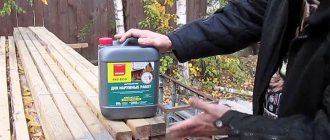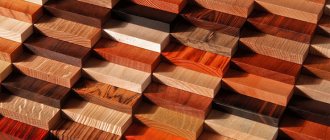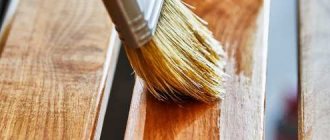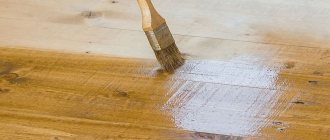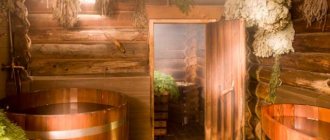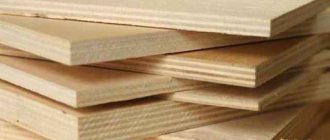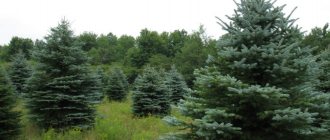Partial or complete impregnation of wood with drying oil has been known since the times of the Egyptian pyramids, however, treating wood with drying oil is still relevant today. Next, we will look in detail at what types of drying oils there are and for what purposes certain types are used, plus you will learn recipes for mixtures based on drying oils and get answers to 5 frequently asked questions on this topic.
Coating wood with drying oil is considered one of the effective and repeatedly proven ways to protect wood.
Types of existing drying oils
Today drying oil is usually divided into several types:
- To natural.
- Semi-natural.
- Combined.
- Synthetic.
To obtain natural drying oil, various mixtures of vegetable oils are used and practically no chemical additives are used. In order for the coating to dry faster, it is customary to add siccatin to the mixture.
As for the scope of application, it should be said that due to the natural composition it is practically impossible to protect wood from insects, and such drying oil costs much more. Therefore, the relevance of facade treatment is questioned.
This impregnation is much more relevant in the form of diluting oil-based paints and pre-priming wood.
This impregnation can also be used, for example, to cover a floor.
Oxols, or semi-natural mixtures, also have a base of vegetable oils, with one difference: the composition contains up to 40% white spirit.
Oxol is used in the same place as natural compositions, but more often than usual it is used in the form of a primer mixture and dilution of oil paints.
It is absolutely not suitable for use in a bathhouse, but it is quite acceptable to use it in residential premises for treating various wooden surfaces.
Among the advantages can be noted:
- Oxol dries a little faster than its natural analogues.
- It has significantly lower consumption.
- The cost is also lower than for natural impregnation.
Mixtures of combined composition have properties similar to semi-natural ones, but they contain much less solvents, by about a quarter.
The main advantage of these impregnations is that they are less toxic to humans.
This mixture is used as a primer and it dries in about a day, at average room temperature and humidity.
Impregnations of a synthetic nature have a purely artificial content.
They are usually made from waste from the production of rubber, coal and oil. Any synthetic impregnation smells unpleasant and has dark shades. This characteristic does not allow the use of drying oil as a primer and it is used mainly for diluting dark paints used to paint facades.
Synthetics have the lowest cost among other analogues, and accordingly they are of lower quality.
Natural materials
To ensure 100% environmental friendliness in home improvement, you need not only to use natural material - wood, but also safe materials for its processing.
Natural drying oil does not contain solvents, but is made from drying and/or semi-drying vegetable oils through deep processing.
How to choose the right drying oil
How to properly treat wood with stain and varnish.
When choosing drying oil, you should follow the simplest rules:
First of all, you should familiarize yourself with the composition of the impregnation, which is always available on the container, whether there is a GOST, it is indicated only on products with a semi-natural or completely natural composition. If it is a synthetic mixture, you should read the certificate. Any impregnating agent, natural or combined, must have a completely homogeneous structure
If foreign impurities or particles can be visually seen, it is not recommended to purchase this impregnation. You should also pay attention to how transparent it is. Natural compositions have only brown shades, synthetic ones can range from colorless to rusty tones.
How to use drying oil to impregnate wood
Features of painting the facades of houses made of brick, wood and plaster
With the help of drying oil you can greatly reduce the consumption of paints and varnishes and because of this it is used in the form of a primer mixture.
It is very easy to apply and does not require special knowledge. Simply apply it to the surface using a brush, natural rag, spray bottle or roller and let it dry.
There are many design options, but the most relevant are:
- Hot impregnation method. This procedure should be carried out in a water bath and is primarily suitable for impregnating non-bulky parts. To do this, take wood, place it in a container with a heated solution and soak it in it for about 6 hours. After this, the part is removed and dried for 4 to 6 days until completely dry. If you initially add about 2% of the total volume of red lead into the solution, the material will dry in two days.
- A mixture of drying oil and kerosene. To do this, take drying oil for wood and kerosene in equal proportions, mix it and keep the wood in this solution. This method can be either cold or hot. The only difference is that with hot impregnation, a few hours are enough, and with cold impregnation it will take a day. The coating dries after the procedure for no more than 2-3 days.
- Drying oil and bag. In order to treat wood with drying oil using this method, you should fill the bag with drying oil about 1/10 of the way. After this, you need to put the wooden element into the bag, wrap it and glue it tightly. The average impregnation time is 3-4 hours. After a while, the bag needs to be opened and since the wood should be completely saturated, the bag should be refilled. This is done until the part stops absorbing.
Features of choice
Wood floors
When choosing the appropriate type of drying oil, you need to pay special attention to some nuances:
If possible, assess the degree of transparency of the liquid in the package. Natural drying oil, as seen in the photo, has a dark brown color and has no sediment.
Read the label carefully. It usually contains detailed information about the composition of the liquid, manufacturer, instructions for use, and so on.
You should definitely check the availability of a certificate of product quality, especially for natural drying oil.
High-quality drying oil is a transparent liquid, without sediment, pungent odor or foreign impurities. The color palette of drying oil is quite scarce; the color of the liquid varies from light brown to dark brown.
In order to achieve durability of the treated surfaces and significantly simplify the processing process, it is necessary to correctly select the optimal drying oil option. You can completely cope with the choice yourself, the most important thing is to take into account all the necessary parameters
Popular manufacturing brands
To choose the right quality drying oil, you will need to study the list of proven, best manufacturers.
Among the most proven manufacturers are:
- Kotovsky paint and varnish plant.
- Perm paint and varnish plant.
- Ufa paint and varnish plant.
- Azov paint and varnish plant.
- Bobrovsky experimental plant.
Story
Boiled butter (butter that has undergone heat treatment) has been known for a long time. Even in Ancient Egypt, boiled oil was used to prepare medicines, aromatic substances, and cosmetics. Boiled butter was used in almost the same way in Ancient Rome.
Natural drying oil is quite expensive. It has been used to coat wooden furniture, to enhance sanded or carved wood surfaces, and as a coloring agent with or without the addition of natural pigments. Oil paints for artists (oil painting) are prepared on the basis of drying oil.
In the 19th century, other substances were found that prevented damage to wooden surfaces and wood products from moisture or pests. The use of drying oil has decreased, but its production has not been abandoned. Work began to find its substitutes or means that would make its production cheaper.
Properties of drying oil
Some vegetable oils, when left in the open air, as a result of the action of sunlight, heat and oxygen, thicken, darken, and create films in a thin layer. It has been noted that not all organic oils have these properties. The development of chemistry and studies of the chemical composition of liquids have proven that only those organic oils that contain linolenic acid are capable of thickening and creating thin films. If its content is intended, such organic oils do not dry out (for example, olive).
Linolenic acid content -
- linseed oil - up to 80%
- hemp seed oil – up to 70%
Walnut (from walnuts), sunflower, poppy oils have from 50 to 30% linolenic acid, so they dry rather slowly and for a long time. All these oils (before heat treatment) contain substances that slow down drying. But they are destroyed during heat treatment and the oil thickens faster and can dry quickly to form a film. Organic oils also obtain the ability to dry faster after adding metal salts (driers) and heat treatment. The liquids obtained in this way are called drying oils.
Most modern drying oils are capable of drying and forming films in 24 hours (from six to 24 hours).
Ancient recipes for drying oils allowed the use of amber or resin for their production. According to modern concepts, they are classified as varnish.
The main purpose and principle of operation of oil impregnation
Coating with drying oil is a painstaking process, but if you know its principle of operation and method of use, then such work can be done by anyone without special qualifications. Oily impregnation acts on wood as follows:
- After application, the composition begins to interact with the sun's rays and the consistency gradually thickens.
- If the product is applied in a thick layer, this will increase the drying time and the top layer will become crusty.
- The polymerization process is activated, which creates a protective film on the surface.
- The substance dries due to the presence of polyunsaturated acids and oils of vegetable origin.
- If the product is of high quality, then drying will take place at an accelerated rate.
To speed up the drying process, the oily impregnation can be slightly heated over a fire or a drier can be added. After drying, a protective film with high adhesion is created. Such treatment significantly reduces the consumption of the next coating. There are several types of drying oil and their production must comply with GOST.
How to dry drying oil
Drying oil with polymetallic driers has the maximum drying speed. If we take, for example, natural flax raw materials that contain manganese or lead drier, then it will take 12 and 20 hours to dry. If you combine these components, you can achieve a much faster period, in some cases 6-7 hours.
The most important factors on which the drying process directly depends are air humidity and temperature.
For comparison, we can give an example in the form of drying oil with cobalt drier. If the room temperature is from 25 degrees, then it will dry approximately twice as fast as at 10 degrees.
Again, to achieve this result, air humidity should be within the recommended limits and not higher than 70%.
If wood products are placed in a room where it is dry, warm and there are no drafts, then it will dry quickly enough.
Any container with drying oil should be stored separately from any heating devices and out of the reach of children.
Such impregnation as drying oil is practically a panacea for treating any wooden surfaces. And most importantly, it is an excellent alternative to expensive modern analogues. However, you should not use drying oil without making sure that it is suitable for use in a particular room.
Ways to prevent odor before starting work
If the repair process involves working with drying oil, it is better to find out in advance how to remove the smell. However, you can reduce the concentration and it will help it fade faster. To do this, you can use these tips.
- Before painting, leave the windows open and turn on the fan. The blades of the equipment must operate in such a way that the air flow is directed outward from the room.
- In rooms with high humidity, it is better to pre-dry the air using an air conditioner or heater.
- You can add a small amount of essence with mint, lemon or vanilla aroma to a jar of drying oil.
If you have to interrupt work for a short period of time, you must close the container tightly. And after completing the repair, it is better to get rid of the rollers and brushes that were used to apply the solution.
felt boots 11 Sep 2014
This is interesting. My drying oil is not linseed or hemp (you can find these types of linseed oil), so does that mean it doesn’t need to be covered at all? If it doesn't dry completely.
Use modern impregnation agents. With several layers, you will get a varnished surface.
Use modern impregnation agents. With several layers, you will get a varnished surface.
The easiest way to find out is to conduct a test on a small surface using drying oil and various varnishes, of course, if there is such an opportunity.
In my opinion, it would probably be easier to take something like a one-component varnish with UV protection. When applying the first layer, add 15-20% thinner, and for subsequent layers without it.
Application area
Drying oil is used in finishing matters. At the same time, it is used to color wood. It is worth considering that drying oil is very different from varnish. Firstly, it is a film that forms on the surface. Secondly, when applied, drying oil does not raise the wood fibers at all, which will not require additional processing later. Thirdly, it retains its properties better after years.
That is why it is customary to finish floors and walls with its help. Only in the case of finishing the floor, you need natural drying oil , since it is better than others able to resist the loads of intense walking. As for the issues of wall decoration, drying oil is unique here. It is convenient to use here because you can add various pigment shades, which will allow you to diversify the walls and achieve ideal results.
Today there are examples and varieties of drying oil that can be used not only for direct contact with wood. For example, it is often used to protect metal from rust by coating the surfaces of metal structures. It is applied to walls that are plastered, which allows it to be used as a primer.
What is it made of?
Drying oil is made from vegetable oils with various additives (as a rule, these are driers - substances that accelerate the drying process of the oil). Additives are usually compounds of various metals. There are several types of drying oils:
- Natural – oil content of at least 97%;
- “Oxol” – 55% oil, the rest is solvent and driers;
- Combined - differs from the previous type only in the proportion of oil in the composition;
- Alkyd - instead of oils, alkyd resins are used;
- Synthetic - instead of natural components (oils or resins), their synthetic analogues are used.
The first 3 types of drying oil are often used for processing wood in wooden construction, as well as in the production of wood products. However, this is far from necessary, since there are other means for processing wood. By the way, if you are seriously thinking about building a wooden house, then rubcon.ru is for you.
What harm can drying oil cause?
To begin with, let's look at drying oils based on natural oil. The oil itself is not dangerous, but there are a few “buts”:
- Potentially hazardous metal compounds (lead, strontium) can be used as driers. However, their quantity is not large and does not reach dangerous concentrations. On the other hand, driers continue their effect on drying oil even after drying, gradually leading to the destruction of the outer layer, its oxidation and the release of various substances into the air. Due to the fact that such excessive destruction would lead to a lack of demand for drying oil, the proportion of strong drying agents in the composition of drying oil is small, and the concentration of substances released during the oxidation process is even less, since the process is sluggish and stretches for years. In other words, from this point of view, there is nothing special to be afraid of, except drying oil of dubious quality with an unclear composition.
- Essential substances. Any vegetable oil contains volatile components, which, theoretically, are not dangerous. However, these components have a pungent odor, the result of long-term exposure to which can be headaches. Allergic reactions are also possible, especially with systematic interaction with drying oil vapors.
- Oxidation. There is a version that oil in the process of oxidation is a carcinogen. However, to get such a negative effect, you need to work in the production of drying oil for several years and not use protective equipment. To obtain a carcinogenic effect, the dosage of oxidized oil must be huge. Let us remember that without any special consequences we often eat food fried in vegetable oil, and during the frying process it oxidizes very intensively.
As for synthetic drying oils, everything depends so much on the composition that without knowing it, it is very difficult to assess the likely harm.
So, the most likely negative factor from using drying oil that you will encounter even with one-time use is the smell. Fortunately, this problem can be eliminated by intensive ventilation, and as the treated surface dries, it disappears by itself.
Technical characteristics and certificate of conformity
Petroleum-polymer drying oil differs significantly from synthetic and natural products. The latter is the most environmentally friendly product and is economical to apply. According to GOST, it must meet the following technical characteristics and ratios:
- Drying agent for oils 3:97%.
- Should not contain any obvious odor.
- Dry at temperatures above 20 degrees.
- The density of the product should not exceed 0.95 g/m. cube
- Acidity is not higher than 5 mg/KOH.
- The content of phosphorus elements is not more than 0.015%.
Reference! The characteristics of any substance must comply with GOST. This must be taken into account when purchasing products. Many unscrupulous manufacturers do not even have a certificate of conformity and sell low-quality products that can be hazardous to human health during use.
Drying oil consumption per 1m2
Drying oil consumption per square meter can be calculated using basic indicators:
- Type of material being processed.
- Composition of drying oil according to GOST.
- Number of layers.
Let's consider the approximate consumption of drying oil per 1 m2 if the wood is processed using a multi-layer or multi-layer method:
| View | 1 layer | 2-3 layers |
| Natural | 0,25 | 0,15 |
| Combined | 0,30 | 0,25 |
| Synthetic | 0,35 | 0,30 |
From the table we can conclude that re-dyeing will minimize consumption and natural appearance, despite its high cost, is much more economical than synthetic and combined substances. 1 liter of product is enough for an area of 20 square meters.
To keep the substance consumption to a minimum, you need to know a few subtleties:
- Before use, the surface must be thoroughly cleaned of various contaminants.
- It is recommended to sand the wood before processing. Roughness will require additional consumption of product to fill the unevenness.
- When purchasing, pay attention to the consistency of the substance. If it is very thick, then the layers will turn out thick, but if it is very liquid, then this will negatively affect the protection.
On a note! Large hardware stores have special stands that highlight the consumption of a particular product they sell.
Artificial drying oil
Artificial drying oils are obtained mainly from petroleum products. Common artificial drying oils are glyphthalic and slate. Glyphthalic drying oil is a mixture of petroleum oils and solvents. Shale drying oil consists of oxidation products of shale oils dissolved in organic solvents.
Artificial drying oils are dark-colored liquids. The films of these drying oils have insufficient strength, poor moisture resistance and low heat resistance.
Artificial drying oils are used for rubbing thickly rubbed paints (except white), as well as for diluting these paints and thickly rubbed paints prepared with other drying oils. In addition, they are used for putties and wood primers.
Artificial drying oils should not contain free mineral acids; Only traces of water-soluble salts are allowed.
Artificial drying oil obtained from rosin is completely different in composition and drying behavior from natural drying oil.
Artificial drying oils are obtained mainly from petroleum products. Common artificial drying oils are glyphthalic and slate. Glyphthalic drying oil is a mixture of petroleum oils and solvents. Shale drying oil consists of oxidation products of shale oils dissolved in organic solvents.
Artificial drying oils are made by thermal or chemical treatment of polymers, often with the addition of vegetable oils. A representative of this type of drying oil is glyph-tall drying oil.
Artificial drying oils are dark in color and have a relatively low atmosphere - and moisture resistance. They are used to prepare paint compositions for interior painting of metals, wood and plaster.
These artificial drying oils can be used for primers and putties on plaster, wood and metal when preparing surfaces for interior painting with all types of paint compositions. Paint compositions and synthol on ether-salt drying oil, carbanol, syntoxin due to the pungent odor can only be used when painting premises, the commissioning of which is carried out after ventilation for 5 - 10 days after the completion of painting work. In case of possible humidification of premises (baths, bathrooms, laundries), these paints are not recommended for use.
Semi-natural and artificial drying oils are used for diluting grated paints. Not suitable for sealing putties.
Semi-natural and artificial drying oils are used to dilute grated paints used to coat equipment. They are not suitable for sealing joints.
A number of artificial drying oils are obtained from the oxidation products of white spirit (gasoline solvent) and purified kerosene.
Films of artificial drying oils dry at different times, depending on their type: from dust in no less than 20 minutes.
Much attention is paid both here and abroad to the problem of obtaining artificial drying oil that replaces drying oil produced on the basis of vegetable drying oils. The solution to this problem is of great theoretical and applied importance. . Of the many artificial drying oils, glyphthalic, shale, synthol, as well as ethinol (varnish) and coumarone-indene drying oils are widely used.
Of the many artificial drying oils, glyphthalic, shale, synthol, as well as ethinol (varnish) and coumarone-indene drying oils are widely used.
Photo of drying oil
Classification
Drying oils are divided into three large groups: oil, alkyd and synthetic. Drying oils are natural, semi-natural and synthetic.
Natural drying oil. It contains natural oil up to 97% - flaxseed, sunflower, soybean, etc.
The oil is filtered and during heat treatment it can undergo air-oxygen purging or not. Drying oil after air-oxygen blowing was called oxidized; without it, it was called polymerized. The drying oil obtained in this way lost its transparency, thickened and acquired a dark color. Salts of cobalt, lead, strontium, iron, and lithium are used as driers. But the content is small (up to 3%).
Drying oil oxol
Oxol has a natural oil content of up to 55%, the other components are solvent and drier. White spirit is used as a solvent - up to 40%, 5% is a drier.
Oxol has an unpleasant odor and can remain for some time even after drying. Oxol drying oil made from linseed oil is considered to be of high quality; oxol from sunflower oil has worse properties compared to linseed oil. Oxol is used both in interiors and on building facades, to cover garden furniture.
Combined drying oils
This is a solution in white spirit of a mixture of oxidized oils with dehydrated oils and drier. The combined drying oils include drying oil K-SKDP, which is a product of modification of sunflower drying oil with low molecular weight rubber SKDP; naphthopolymer drying oil - 55% solution of carbon-water resin in white spirit.
Alkyd drying oils
Alkyd drying oils are obtained by processing vegetable oils. Drying oils are classified according to the type of alkyd resin -
- glyphthalic
- xiftaleva
- pentaphthalic (made from sunflower, soybean and camelina oils; PF-K - using castor and tung oils).
Synthetic drying oils
Synthetic drying oils are solutions of shale oil, salts of naphthenic acids and some resins in organic solvents. So far, drying oils include: slate, synthol, ethinol, polydiene etc. Of these, only slate provides a weather-resistant film, therefore it is recommended for outdoor work. It is not used for interior painting because it has a strong odor. Drying oil ethinol forms a shiny hard film that is resistant to alkalis, acids, and water, but it is not weatherproof. It is used for anti-corrosion primer and as an additive to other drying oils (no more than 15%).
Soviet-made synthetic drying oils took a long time to dry, were poorly maintained on the surface, and over time cracked and crumbled. Synthetic drying oils are the most toxic in quality. There is a ban on their use in residential premises. They are used only for outdoor work, with restrictions - in temporary premises for adults, but with good ventilation.
It is advisable not to use them at all in rooms for children, the elderly and teenagers.
Alkyd composition
Drying oil based on pentaphthalic, glyphthalic, and xyphthalic alkyd resins requires the use of additional solvents or oils, and includes a drier.
The material has the form of a solution that is resistant to temperature fluctuations and atmospheric factors, and is not susceptible to ultraviolet radiation. After drying, it is necessary to apply paint or varnish in several layers.
